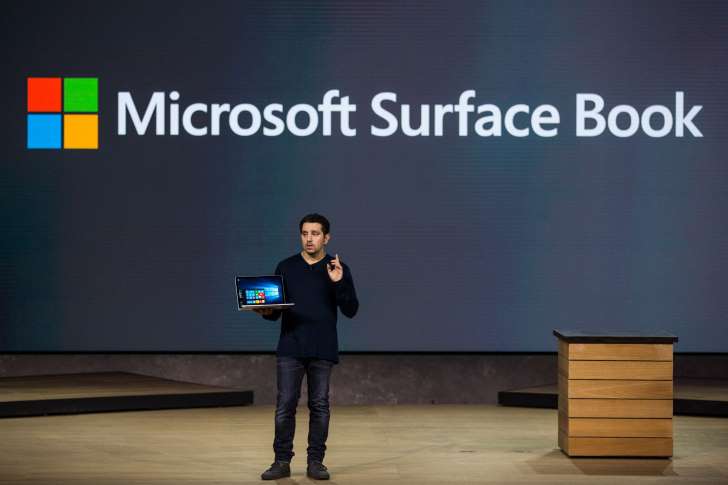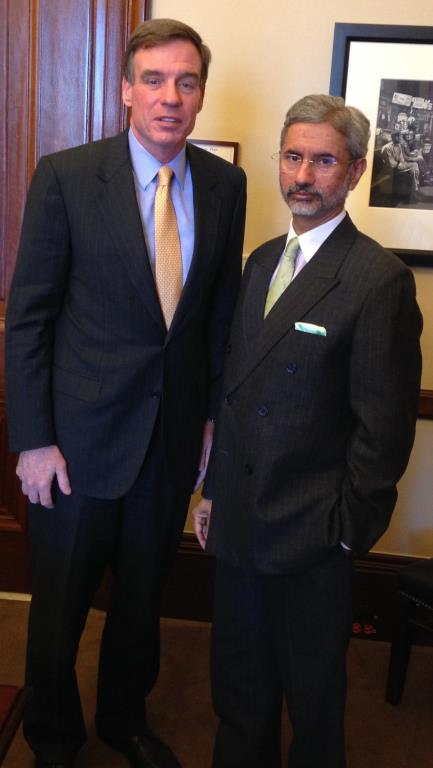October 7, 2015

Microsoft Corporate Vice President Panos Panay introduces a new laptop titled the Microsoft Surface Book at a media event for new Microsoft products on October 6, 2015 in New York City.
October 7, 2015

Microsoft Corporate Vice President Panos Panay introduces a new laptop titled the Microsoft Surface Book at a media event for new Microsoft products on October 6, 2015 in New York City.
NEW YORK – The very concept of a Microsoft hardware event still feels weird to me. Software constitutes half of Microsoft's name and most of its DNA, and yet today we were treated to a 110-minute presentation showing off Microsoft's hardware-engineering acumen. And the whole thing was so breathlessly exciting that it felt more like 110 seconds. The most inspiring, intriguing, and frankly irresistible new hardware today is coming from Microsoft.
With the Surface Pro 4, Microsoft has taken the concept it pioneered — of a tablet with a keyboard cover, a stylus, and a fully-featured OS — and has refined it into an elegant, frightfully efficient productivity machine. Apple's iPad Pro and Google's Pixel C are neophyte reactions to Microsoft's aggressive innovation, but they're already behind this latest generation. Microsoft is comparing the Surface Pro 4 against the MacBook Air and rightly so, given its tablet's Intel Skylake processor; larger 12.3-inch display; and abundance of memory, storage, and connectivity options.

Microsoft Surface Book
Microsoft Surface Book: Everything you need to know
The brand new Surface Book is, like the original Surface Pro, another effort at complete reinvention. The Surface Book deconstructs the laptop and reconstitutes it in the shape of a hybrid device of the sort we've never seen before. Microsoft didn't just make a new tablet with a detachable keyboard, it designed a whole new hinge and attachment mechanism, and it intelligently split up the internal components to deliver both a light and sleek tablet and a powerful laptop. The discrete Nvidia graphics chip sits among a battery of batteries inside the keyboard dock, liberating the tablet of most of its heft when power is not a priority, but keeping it substantially PC-like when the whole thing is connected and operating as one.

I am hugely impressed by the clear-eyed purpose underpinning every one of the decisions that Microsoft has made with its two Surface devices today. The boundlessly charismatic Panos Panay — now in charge of both the Lumia and Surface product lines at Microsoft — simply didn't allow a moment's questioning or dubiety. Every time he introduced a new feature or change, he asked the rhetorical "why?" question himself, and he answered it convincingly. Here are a thousand levels of pressure sensitivity for the stylus, and here's what you can do with that. Here's a keyboard with 1.6mm of travel and here's why you'd want to mash your fingers against it. Panay created something that every tech company strives for, but few achieve: desire.
I want a Surface Book.
Microsoft is full of originality and ambition
It may seem odd that Microsoft is investing so heavily in creating "the ultimate laptop" with the Surface Book and what looks like a truly no-compromise tablet in the Surface Pro 4. After all, this is the same event at which CEO Satya Nadella said that the experience is more important than the device. "The hub is you," he proclaimed in his closing remarks. But the more important thing that Nadella noted was Microsoft's emphasis on getting people to want its products and services rather than just need them. Microsoft Windows and Office are ubiquitous around the globe, and many people enjoy using them, but they are not loved in the same way that an iPhone or a MacBook might be. Physical devices are just easier to develop an attachment to, and the products announced today look like the perfect vehicles for Microsoft's stated ambition of "a complete magical experience."
The lesson that prompted Microsoft to design the first Surface Pro was that software is not enough to generate the best possible user experience. Software and hardware must work harmoniously — as shown off today with Cortana integration in the stylus and Windows Hello security facilitated by an Intel RealSense camera. Apple has repeatedly noted that its greatest asset is in precisely this ability — to integrate disparate parts into a cohesive experience — and that's exactly the strategy Microsoft is pursuing now. And yet, Microsoft is the furthest thing we currently have from an Apple copycat: the Surface Pro 4 manages to be a slick laptop made of metal that looks nothing like a MacBook. And lest it hasn't been said enough, the Surface Pro is leading Apple's iPad instead of chasing it.
Microsoft's Surface devices occupy a superficially similar role to Google's Nexus devices: setting a template for others to follow and establishing a high standard for the user experience. But Microsoft's ambition far outstrips Google's. A new flagship New York City Microsoft Store will soon be opening up and these Surface PCs will take pride of place there and everywhere else that Microsoft sells its wares. "We don't just build hardware for hardware's sake," said Nadella, fully conscious that hardware is nonetheless instrumental to delivering the best possible experience to Windows users.
Desire is the hardest thing to manufacture, but Microsoft had no shortage of it today
Having already shown us the software part of its new strategy with Windows 10, Microsoft today completed the equation with delightfully attractive new hardware. It has rekindled my excitement for new devices, at the tail end of a year where innovation seemed to be either lacking or all too predictable. Today, Microsoft surprised, wowed, and delighted. It generated passion where there once was pessimism. Kudos!
Courtesy: The Verge
















































































































